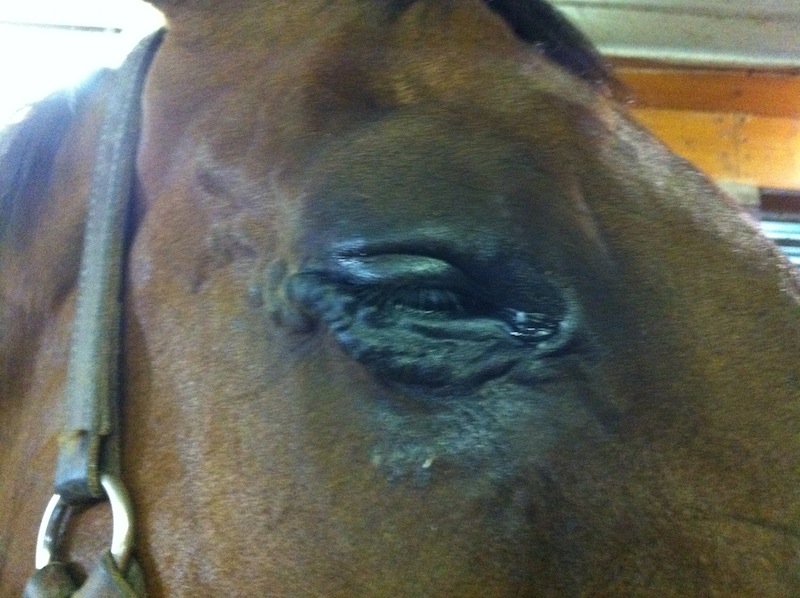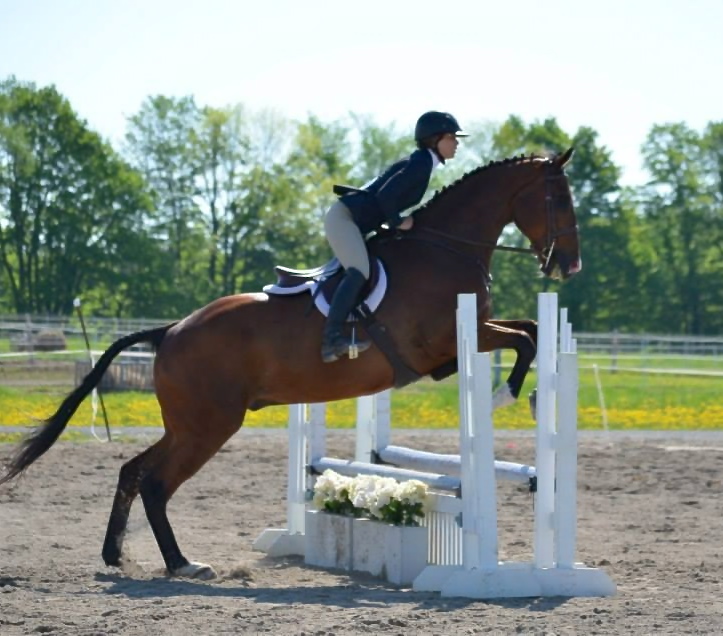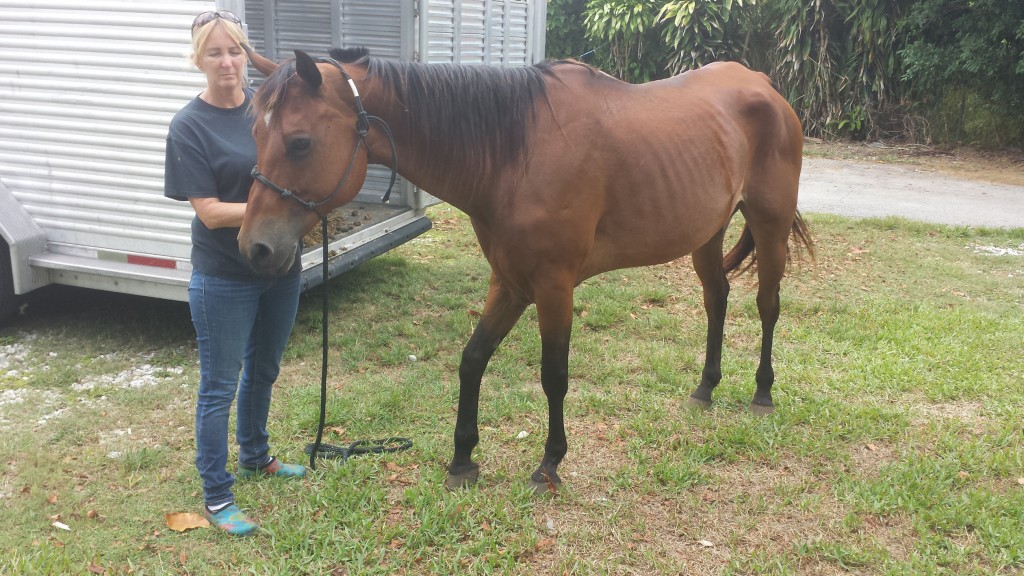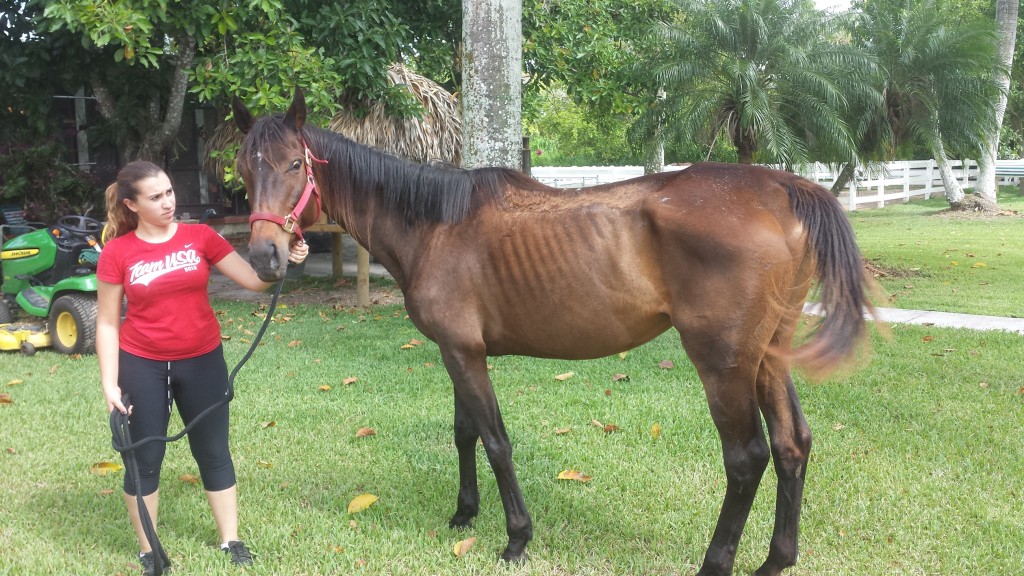
T-bred Silver Value receives a dose of GastroMax3, which was made up especially for New Vocations horses by its manufacturers, Horse Gold Inc.
Horse Gold Inc., the manufacturer of ulcer treatment GastroMax3, has donated $250,000 of its product to New Vocations Racehorse Adoption—enough to treat 400 horses expected to come through the charity doors this year.
A special batch of GastroMax3 was made specifically for the Ohio-based charity after longtime horseman and philanthropist Scott Robinson, CEO of Horse Gold Inc., decided he wanted to “do something big” for the charity.
After receiving an inquiry from New Vocations Founder and Executive Director Dot Morgan, seeking possible donations of the medicine that she says is “like gold” to her charity, Robison says he started thinking about ways to do even more.
“I asked her how many horses she had, and when she said about 400, I said, ‘How about I donate enough tubes for every horse?’ She kind of broke down in tears,” Robinson says. “She said she told everybody, and they were all screaming and crying.”
He adds, “It was the right thing to do. That way they didn’t have to pick and choose which horse got treated.”
With that decision, Robinson had a special batch made up for New Vocations. The batch is dyed red for accounting and tracking purposes, but it might as well be spun gold for Morgan and the horses.
Says Morgan, “A lot of horses coming off the track are stressed, and underweight. Evidence suggests that 75 to 85 percent of horses off the track have ulcers.”
Horses that fail to thrive, or do not eat well have blossomed with the ulcer treatment, she says. And having an ample supply of the treatment, which retails for approximately $17 per tube, is a godsend, she adds. “Until now, we could only justify the cost for the worst cases. This generous donation will benefit all the horses.”
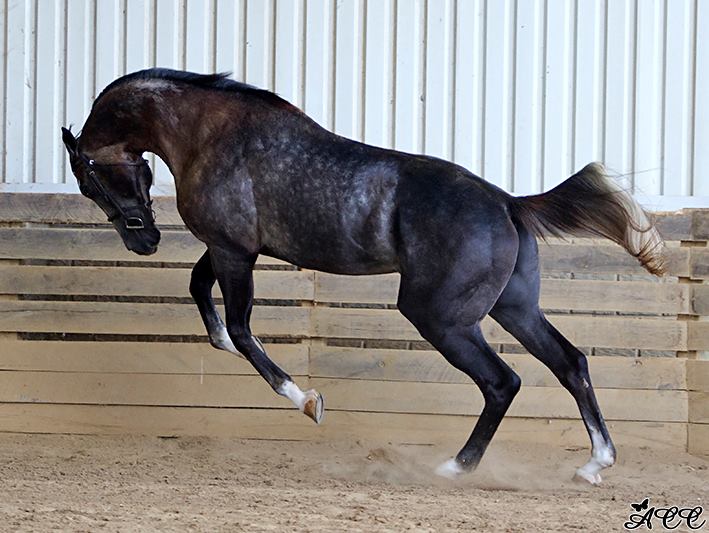
How this New Vocations horse looks, as though jumping with joy, reflects the mood at New Vocations since the generous donation was made. Photo by Aubrey Crosby of ACE Photography.
Robinson has been a regular contributor to horse charities, and to New Vocations.
“Horses have given me my career, and my happiness,” Robinson says. “They’ve raced their guts out for their owners.” It is fitting, he notes, that with his help, and 14,000 tubes of his product GastroMax3, a lot of ex-racehorses will be a lot more comfortable as they ease into their new careers.
Adopters who purchase horses treated with his donated product will also be given the opportunity to buy it at a steep discount, going forward, he adds.
“We don’t want the cost to be a factor in maintaining the health of the retired horses,” he says.



